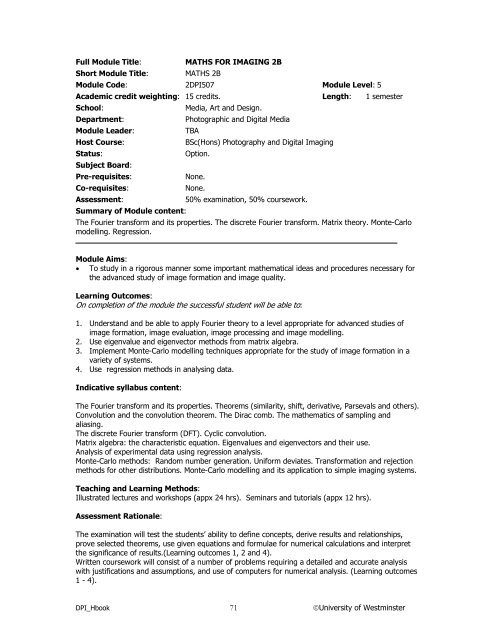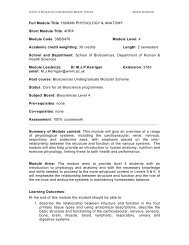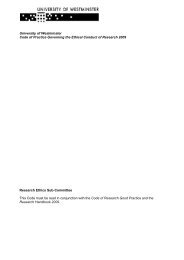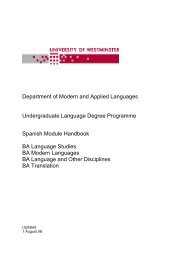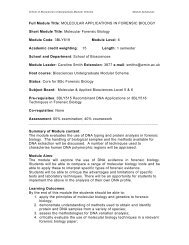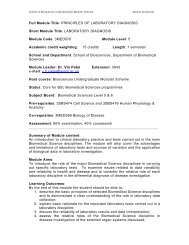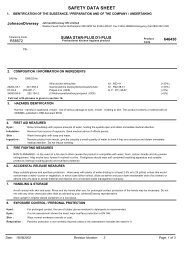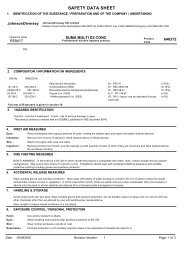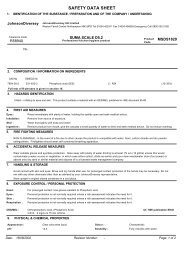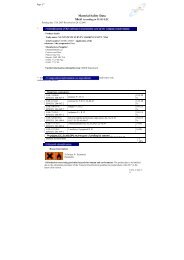CONTENTS 1. Introduction 1.1 Course Outline 1 1.2 Introduction ...
CONTENTS 1. Introduction 1.1 Course Outline 1 1.2 Introduction ...
CONTENTS 1. Introduction 1.1 Course Outline 1 1.2 Introduction ...
You also want an ePaper? Increase the reach of your titles
YUMPU automatically turns print PDFs into web optimized ePapers that Google loves.
Full Module Title:<br />
MATHS FOR IMAGING 2B<br />
Short Module Title: MATHS 2B<br />
Module Code: 2DPI507 Module Level: 5<br />
Academic credit weighting: 15 credits. Length: 1 semester<br />
School:<br />
Media, Art and Design.<br />
Department:<br />
Photographic and Digital Media<br />
Module Leader:<br />
TBA<br />
Host <strong>Course</strong>:<br />
BSc(Hons) Photography and Digital Imaging<br />
Status:<br />
Option.<br />
Subject Board:<br />
Pre-requisites:<br />
None.<br />
Co-requisites:<br />
None.<br />
Assessment:<br />
50% examination, 50% coursework.<br />
Summary of Module content:<br />
The Fourier transform and its properties. The discrete Fourier transform. Matrix theory. Monte-Carlo<br />
modelling. Regression.<br />
Module Aims:<br />
• To study in a rigorous manner some important mathematical ideas and procedures necessary for<br />
the advanced study of image formation and image quality.<br />
Learning Outcomes:<br />
On completion of the module the successful student will be able to:<br />
<strong>1.</strong> Understand and be able to apply Fourier theory to a level appropriate for advanced studies of<br />
image formation, image evaluation, image processing and image modelling.<br />
2. Use eigenvalue and eigenvector methods from matrix algebra.<br />
3. Implement Monte-Carlo modelling techniques appropriate for the study of image formation in a<br />
variety of systems.<br />
4. Use regression methods in analysing data.<br />
Indicative syllabus content:<br />
The Fourier transform and its properties. Theorems (similarity, shift, derivative, Parsevals and others).<br />
Convolution and the convolution theorem. The Dirac comb. The mathematics of sampling and<br />
aliasing.<br />
The discrete Fourier transform (DFT). Cyclic convolution.<br />
Matrix algebra: the characteristic equation. Eigenvalues and eigenvectors and their use.<br />
Analysis of experimental data using regression analysis.<br />
Monte-Carlo methods: Random number generation. Uniform deviates. Transformation and rejection<br />
methods for other distributions. Monte-Carlo modelling and its application to simple imaging systems.<br />
Teaching and Learning Methods:<br />
Illustrated lectures and workshops (appx 24 hrs). Seminars and tutorials (appx 12 hrs).<br />
Assessment Rationale:<br />
The examination will test the students’ ability to define concepts, derive results and relationships,<br />
prove selected theorems, use given equations and formulae for numerical calculations and interpret<br />
the significance of results.(Learning outcomes 1, 2 and 4).<br />
Written coursework will consist of a number of problems requiring a detailed and accurate analysis<br />
with justifications and assumptions, and use of computers for numerical analysis. (Learning outcomes<br />
1 - 4).<br />
DPI_Hbook 71 ©University of Westminster


